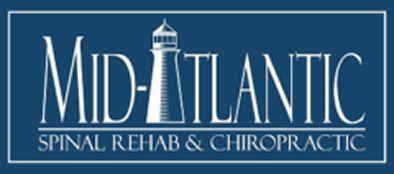Lost In Translation – He Said, She Said, and the Truth
As a Baltimore Chiropractor that spends the majority of my time treating patients injured in Baltimore auto accidents, I have learned over the years that communication is paramount. Whether that be communication with a patient, an insurance company, or even while communicating my thoughts into a daily SOAP note. In my practice we work closely along side internists and specialists such as pain management physicians and orthopedic surgeons. A lot of the “co-management” of these patients requires continued back and forth communication on behalf of these patients with these other providers. My staff and I do our best to succinctly record our findings and our opinions regarding the patients that we are co-treating. I even have the personal cell phone numbers of most of the providers we work with so that I can call ahead and leave detailed messages regarding patient care.
An interesting phenomenon occurs when I refer a patient to another practice for an evaluation and future treatment recommendations. When they come back to discuss the encounter and the plan moving forward, most of the time the patient has no idea what was said, what was done, or what the plan is moving forward! It’s as if they were not present for their own appointment.
I can certainly fill them in and get them up to speed when I receive a copy of the medical records several days later, but it delays my understanding in how to best help them moving forward in light of the new medical evaluation.
I recently had an epiphany. I realized that if patients outside of my office have no idea what their conditions are or what the next step towards recovery is, then it stands to reason that even in my office there is probably a breach of communication. As the old saying goes “there’s his side, her side, and the truth.” That is to say in our world, there’s what I say to my patients, what they hear, and the truth. Most of the time losing some pieces of information has no clinical importance. However, sometimes missing small details can lead to grave issues.
I have a patient that I am treating for a Baltimore auto accident right now. In her crash she suffered lower back pain that has, for the most part, failed to respond well to conservative chiropractic therapy. We recently referred her for a lower back MRI to determine if she had disc inflammation. I reviewed the radiological report and it detailed some disc protrusions and a torn ligament her spine. It also found a kidney finding that was unusual, and it told her to follow up with her primary care physician for further diagnostic evaluation.
I got the MRI report prior to her next office visit. When she got in she said “Her Dr. G, did you get my results? Someone called my house and said I need to have my liver looked at. Any idea whats going on?” In a classic game of telephone the message was distorted and permuted before reaching its intended target. In this particular case I had to explain to the patient that the abnormal findings were of her kidney and not her liver. I made her a copy of her MRI report and I encouraged her to see her PCP and bring a copy of these results with her so that her PCP can order the next set of tests in order to help her determine if there is a problem with her kidney.
In light of these miscommunications it got me thinking about the best ways for patients to better communicate with their providers and how to get the most out of each clinical encounter. In no particular order these are as follows:
- Be prepared for your visit and write a list of questions you intend to ask.
- Bring a copy of any examinations (x-rays, MRIs) with you for the provider to review on the initial visit. This will help “speed up” the process of waiting two more weeks to return for imaging interpretation.
- Bring a “helper” who can go with you. 4 ears are better than 2.
- Write salient information down during the visit
- Ask for copy of any blood work or examination findings after the visit. This can help you keep track of what testing was already done so you don’t have to waste time or money repeating exams unnecessarily.
- Ask providers if you can record the encounter with your smart phone or other device (they may or may not say yes)
- Keep a notebook with you to record what pain you have and when you have it. It’s hard to remember when you had pain once you are feeling well.
- Keep a calendar of your appointments so that you can coordinate with all providers.
No one said recovering from a Baltimore auto accident injury would be easy. There is a lot of medical terminology and there are many doctors appointments. In order to recover as quickly as possible and in order to avoid any bad outcomes, it is extremely important that patients understand what their providers are saying and how it impacts them. Without a fluid understanding of their injury and the process to recover, patients will be left in the dark in terms of how to best improve their conditions. Most providers have no issue in slowing down, re-explaining exam findings, and coordinating care with other providers.
If you, or someone you know, has been injured in a Baltimore auto accident please contact Mid-Atlantic Spinal Rehab & Chiropractic at (443) 842-5500. We would be happy to help!
Dr. Gulitz
